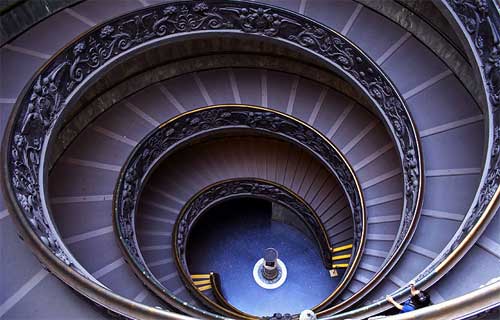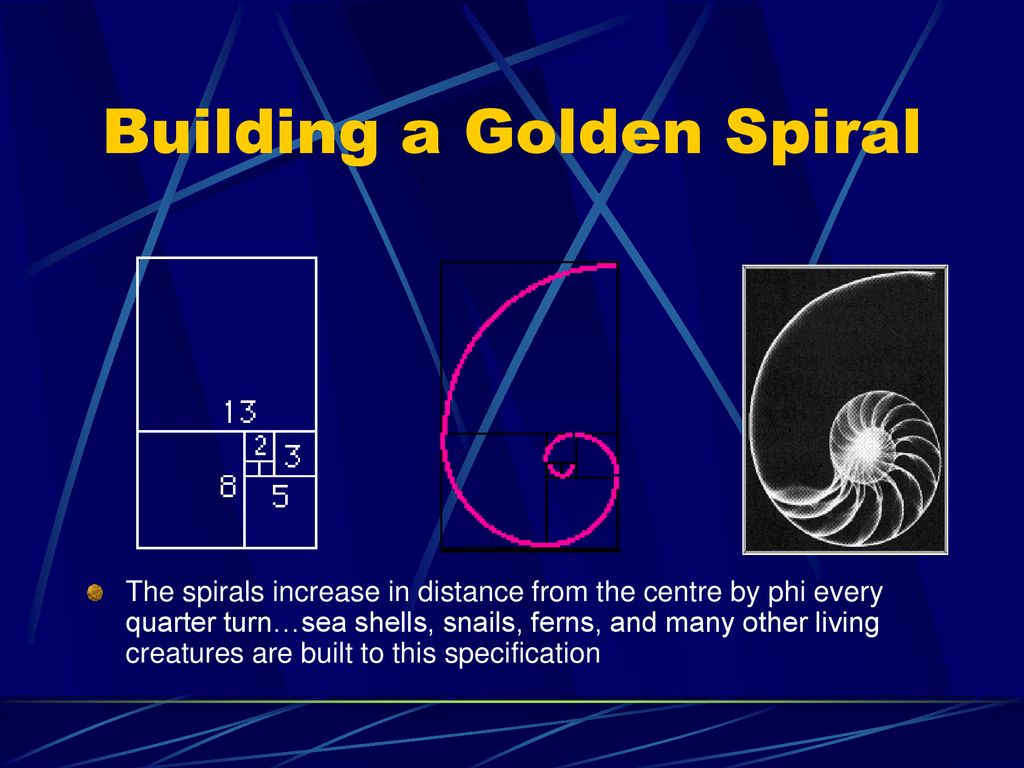|
|
  
    Escalera de Bramante del Vaticano
Esta increíble escalera que en un genial efecto óptico parece que no va a terminar nunca es obra de Donato d’Angelo Bramante, que ha pasado a la posteridad como Bramante. Vivió a caballo entre los siglos XV y XVI, y fue uno de los arquitectos italianos más reconocido, por ser el ideólogo de la Basílica de San Pedro.Bramante fue además quien introdujo el Renacimiento en Milán y realizó obras tan hipnóticas como esta escalera que emula las espirales del ADN. El efecto “infinito” lo consigue la doble hélice enrollada hacia la derecha. En realidad, cuando nos asomamos a la escalera, si nos fijamos, vemos que en realidad no es una sóla escalera, sino dos enroscadas. Una de ellas es para bajar y otra para subir.
La escalera se encuentra a la salida de los Museos Vaticanos, en realidad, es la última obra de arte que se contempla en las galería y el visitante se lleva de recuerdo esta espiral sin fin. Si la escalera está practicamente vacía, como en la foto, es más difícil de descubrirle el truco al artista, pero si circula gente, que es lo habitual, el secreto está en fijarnos en que una de las espirales está llena de personas – la de bajada – y otra casi vacía, – la de subida -, porque está cerrada al público.
     
|
|
|
|
|
Astronomical alignment[edit]
Looking east through nave on 23 June 1976, two days after the summer solsticeMary Magdalene's relics in the crypt
In 1976, Hugues Delautre, one of the Franciscan fathers charged with stewardship of the Vézelay sanctuary, discovered that beyond the customary east-west orientation of the structure, the architecture of La Madeleine incorporates the relative positions of the Earth and the Sun into its design. Every June, just before the feast day of Saint John the Baptist, the astronomical dimensions of the church are revealed as the sun reaches its highest point of the year, at local noon on the summer solstice, when the sunlight coming through the southern clerestory windows casts a series of illuminated spots precisely along the longitudinal center of the nave floor.[13][14][15][16][17]
|
|
|
|
|
Astronomical alignment[edit]
Looking east through nave on 23 June 1976, two days after the summer solstice Mary Magdalene's relics in the crypt
In 1976, Hugues Delautre, one of the Franciscan fathers charged with stewardship of the Vézelay sanctuary, discovered that beyond the customary east-west orientation of the structure, the architecture of La Madeleine incorporates the relative positions of the Earth and the Sun into its design. Every June, just before the feast day of Saint John the Baptist, the astronomical dimensions of the church are revealed as the sun reaches its highest point of the year, at local noon on the summer solstice, when the sunlight coming through the southern clerestory windows casts a series of illuminated spots precisely along the longitudinal center of the nave floor.[13][14][15][16][17]
|
|
|
|
|
salt lake city=alchemy (salt)=dollar=$= LOT S WIFE (SODOMA AND GOMORRA)
|
|
|
 Primer Primer
 Anterior
71 a 85 de 115
Siguiente Anterior
71 a 85 de 115
Siguiente Último
Último
|

